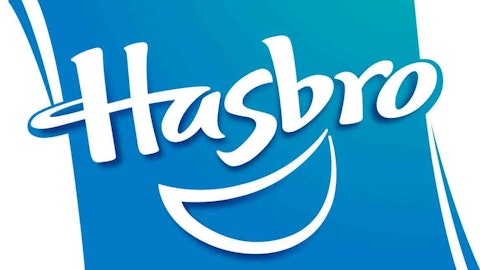When I was a child, there was nothing I wanted more than toys. Stuffed animals, He-Man figures, toy cars, and Legos — I loved them all. Those days are gone, or perhaps, changed. For the last few years, toy sales have been on a slow decline, sinking from annual U.S. sales of $23 billion to just over $21 billion in 2011. 2012 wasn’t any better, and traditional toy manufacturers are starting to feel the sting.

Kids these days
The obvious answer is that kids are staring at their device of choice these days. LeapFrog Enterprises, Inc. (NYSE:LF), the maker of children’s handheld educational games, increased its 2012 sales by 28%, rising over $500 million. The problem with jumping to LeapFrog Enterprises, Inc. (NYSE:LF) as a solution, however, is that the business is included in most overall toy sales results.
Research group NPD includes “youth electronics” as one of its toy categories — though based on the numbers alone, LeapFrog makes up most of the subtotal. The clear division arises only when you start to look at video games. Hasbro, Inc. (NASDAQ:HAS) recently entered a multiyear agreement with Electronic Arts Inc. (NASDAQ:EA), giving the game maker exclusive rights to games like Monopoly and Clue. The tie-in isn’t new, but it does assure EA of a product line to help it combat newer game developers.
As traditional toys stagnate, traditional video games are starting to feel the pinch, too. Electronic Arts Inc. (NASDAQ:EA) and others have been feeling the sales pinch, with newly announced declines in video games sales coming in June, according to NPD. So the question remains: Where is the money going?
The hidden life of online sales
Hiding behind the drop in board games, the fall in dolls, and the slow decline in video games is the specter of online video game sales. NPD only estimates sales, but some of the biggest purveyors of online games — companies like Steam and Apple Inc. (NASDAQ:AAPL) — don’t report their game sales figures in any detail. NPD recently announced that it will be tracking digital sales by the end of the year, but until that time, digital sales represent the black box of toy sales.
The move by Hasbro, Inc. (NASDAQ:HAS) isn’t just an attempt to keep up with the times — it’s an attempt to buy into the future. Mattel, Inc. (NASDAQ:MAT) has been slow to get on the bandwagon, although it made early attempts at video game success with its own short-lived Intellivision system in the late ’70s.
For now, toy makers’ futures seem weak, but not desperate. There is always going to be room in the retail world for actual toys, but the share of cash given over to those toys is likely going to continue falling. Hasbro, Inc. (NASDAQ:HAS) seems best poised to take advantage of the shifting sands, but in the end, it may be game developers and digital retailers that benefit the most.
The article What’s Behind Hasbro’s and Mattel’s Weak Toy Sales? originally appeared on Fool.com and is written by Andrew Marder.
Fool contributor Andrew Marder has no position in any stocks mentioned. The Motley Fool recommends Apple, Hasbro, LeapFrog Enterprises (NYSE:LF), and Mattel. The Motley Fool owns shares of Apple, Hasbro, and LeapFrog Enterprises.
Copyright © 1995 – 2013 The Motley Fool, LLC. All rights reserved. The Motley Fool has a disclosure policy.





